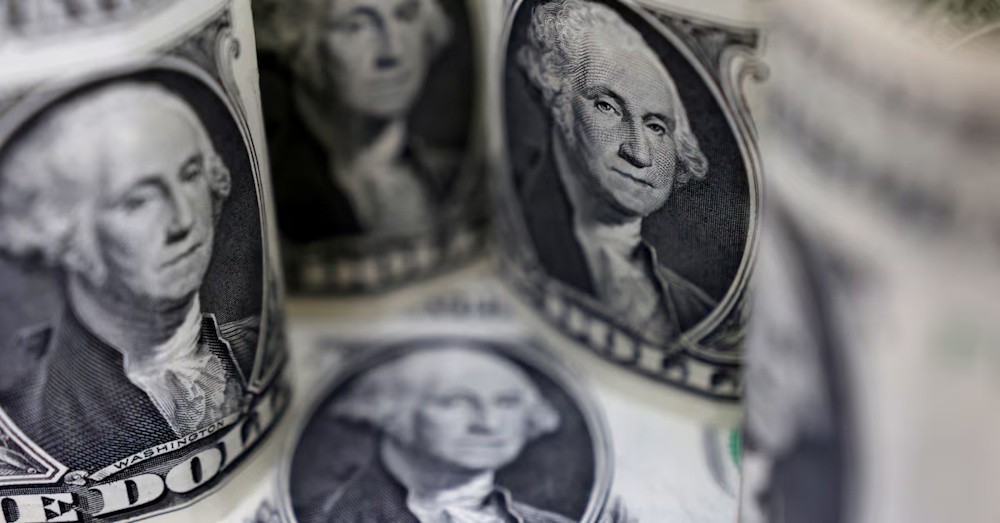
The dollar climbed to a four-month peak against the euro on Tuesday, as divisions within the Federal Reserve cast uncertainty on the likelihood of an additional rate cut this year. Meanwhile, a risk-off sentiment prompted investors to turn to the U.S. currency for safety. Meanwhile, the pound depreciated following the UK finance minister’s indication of “hard choices” in her forthcoming budget. The overall market sentiment exhibited a marked decline, characterized by falling stock prices and an increased demand for government bonds. Concurrently, safe-haven currencies such as the yen and the Swiss franc remained resilient. “I believe it’s merely a traditional safe-haven bet,” stated Michael Brown, highlighting the robustness of both the dollar and the Japanese yen. The euro declined for the fifth consecutive session, decreasing by 0.3% to $1.1483, marking its lowest point since August 1. In relation to the yen, the dollar experienced a decline of 0.4%, settling at 153.60 yen, while the Japanese currency continued to hover close to a recent low not seen in 8-1/2 months. “Despite all the column inches that ‘death of the dollar’ takes up, it does remain the best haven out there in the minds of market participants,” Brown stated. In light of diminished investor risk appetite, the Australian dollar experienced a decline of 0.8%, settling at $0.649. This movement followed the Reserve Bank of Australia’s decision to maintain its cash rate at 3.60%, aligning with expectations, while expressing caution regarding any potential further easing. Cryptocurrency bitcoin experienced a decline of 7%, now priced at $99,679, marking its first drop below the $100,000 threshold since June.
Tuesday’s increase in the dollar was a continuation of the rally that ensued after last week’s Federal Reserve meeting. During that meeting, the central bank reduced rates as anticipated; however, Chair Jerome Powell indicated that an additional cut in December was not assured. Since then, Fed officials have presented differing perspectives on the current state of the economy and the associated risks, particularly in light of the economic data that has been halted due to the U.S. government shutdown. Current market expectations indicate a 65% probability of a rate cut in December, a notable decrease from the 94% observed just a week prior, according data. The alteration in short-term projections has strengthened the dollar. The dollar index, which evaluates the U.S. currency relative to six others, exceeded 100 for the first time since early August, currently standing at 100.17. Nonetheless, certain investors continue to express doubts regarding whether the dollar’s recent strength signifies a sustainable shift in the currency’s long-term prospects. “Just as US growth numbers have been upgraded in recent months, so have the European ones, leaving relative growth expectations significantly narrower than the start of 2025,” stated George Saravelos in a note. “This benign global growth environment is not consistent with a continued dollar rally,” Saravelos stated.
Sterling declined by 0.9% to $1.3015, following British finance minister Rachel Reeves’ outline of the challenging economic environment she is contending with, highlighting elevated debt levels, low productivity, and persistent inflation. “Reeves’ remarks that her budget choices will focus on reducing inflation to prepare for rate cuts are likely to enliven the debate about a (Bank of England) move before year-end and will focus attention on this week’s BoE meeting,” stated Jane Foley in a note. “The pound is anticipated to stay under pressure as we approach the November 4 policy meeting, influenced by speculation surrounding a dovish tilt.”
The Bank of Japan’s recent choice to maintain interest rates at their current level has provided the yen with essential support. The recent depreciation of the yen has led Finance Minister Satsuki Katayama to emphasize the government’s commitment to closely observe currency fluctuations with heightened urgency. The yen is nearing thresholds that prompted intervention by Japanese authorities in both 2022 and 2024. U.S. President Donald Trump, who visited Japan last week, has consistently expressed concerns regarding governments that permit their currencies to depreciate, contending that it provides them with an inequitable trade benefit. Analysts indicated that this could suggest Katayama will proceed with caution.
